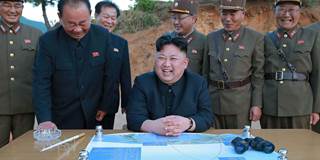OnPoint Subscriber Exclusive
Longer Reads provide in-depth analysis of the ideas and forces shaping politics, economics, international affairs, and more.

Inside the North Korea Maze
US President Donald Trump surely has plenty to worry about at home nowadays. But his administration’s focus on its domestic political problems, together with its lack of a coherent Asia policy, threatens to empower one of the world’s most dangerous regimes and imperil an economically vital – and strategically unstable – region.
CAMBRIDGE – Shortly before he departed the White House, President Barack Obama warned his successor that North Korea would soon be the United States’ most dangerous strategic problem. Donald Trump responded in his usual cavalier way: he blustered, and then, after wining and dining with Chinese President Xi Jinping in early April, he softened his hardline stance toward the country, in order to encourage the Chinese to rein in their wayward ally. But the Democratic People’s Republic of Korea (DPRK) seems to be one step ahead of Trump. Even with a heavy concentration of US military power at its doorstep, it continues to launch missiles.